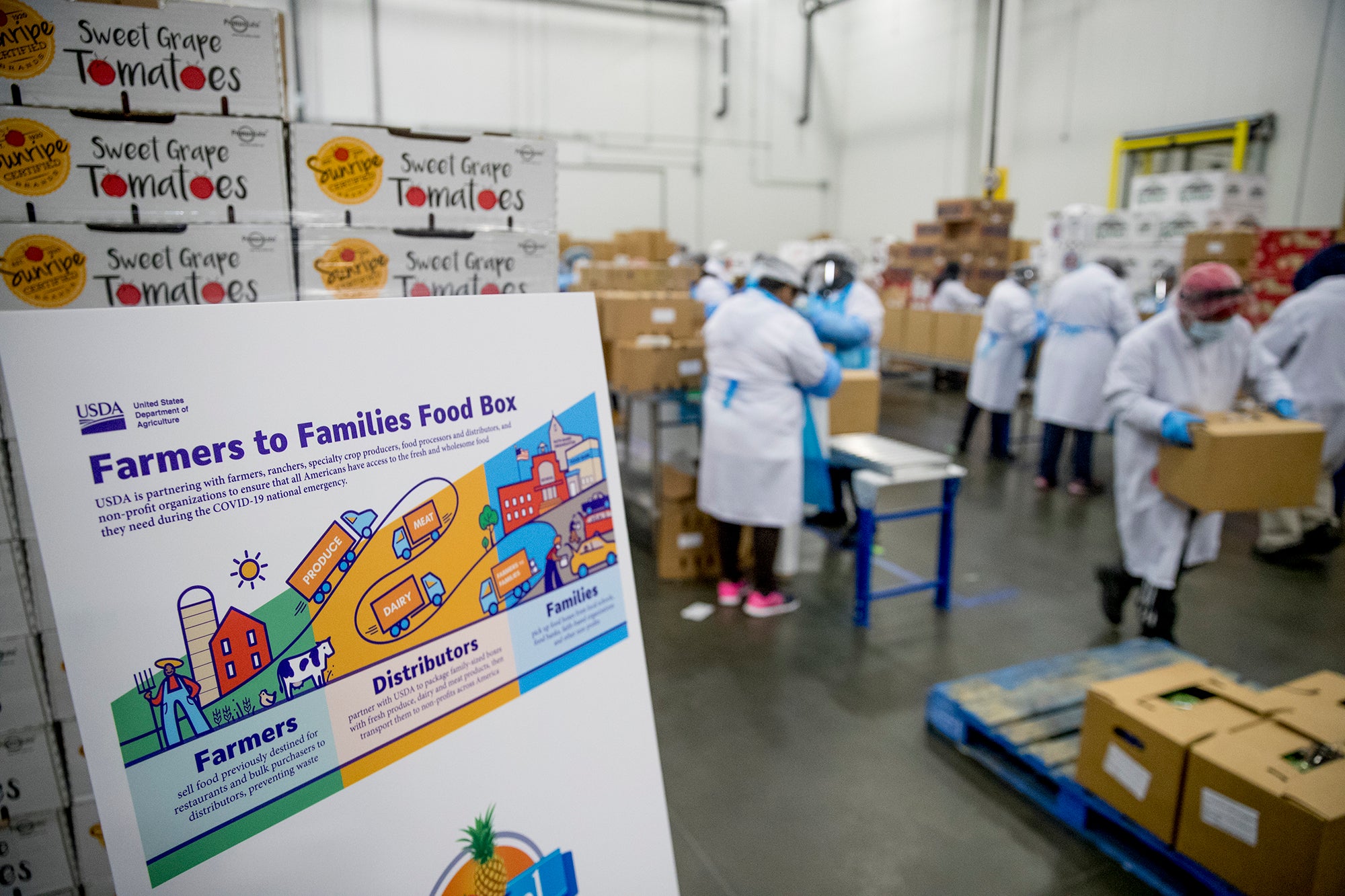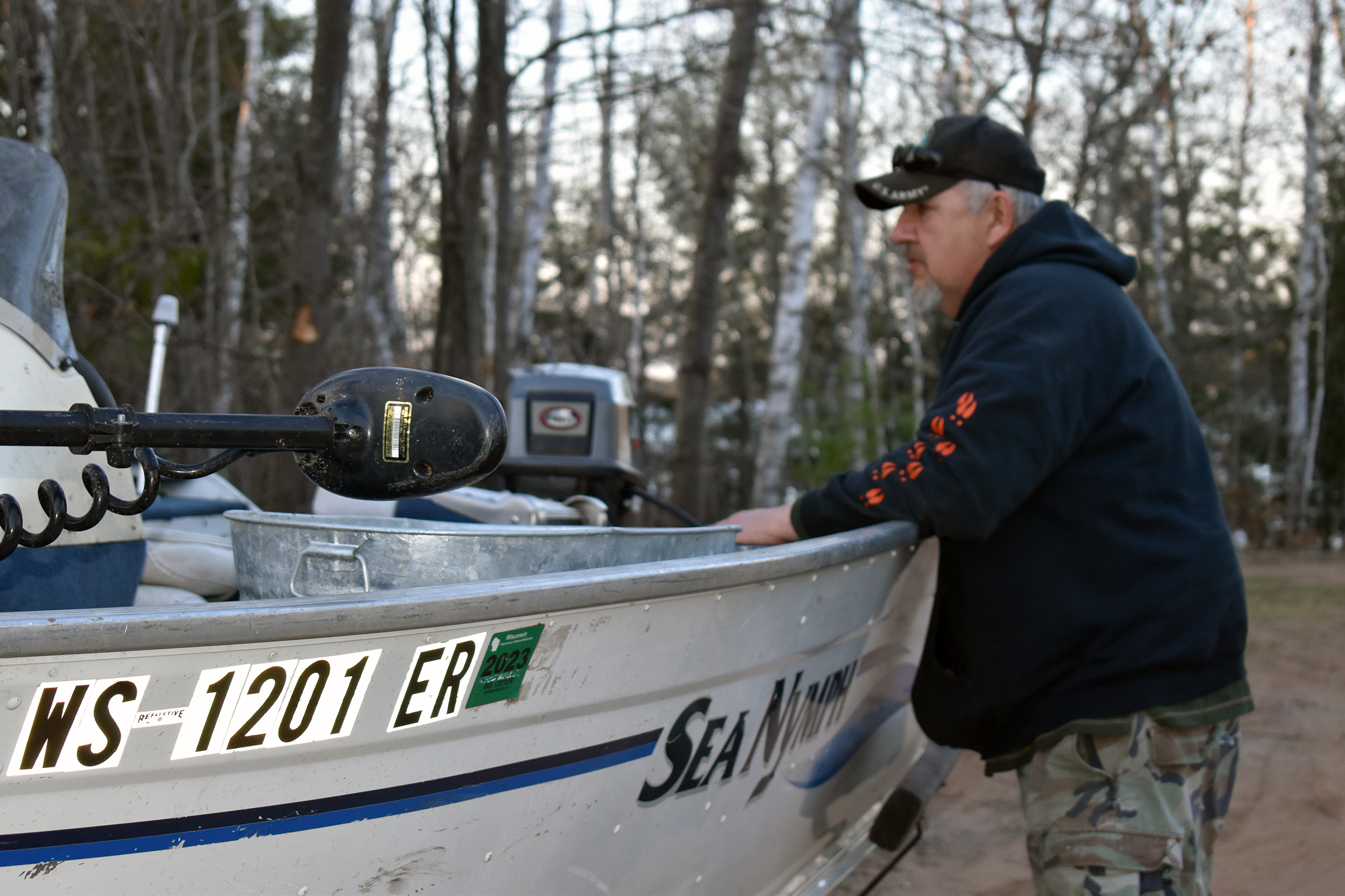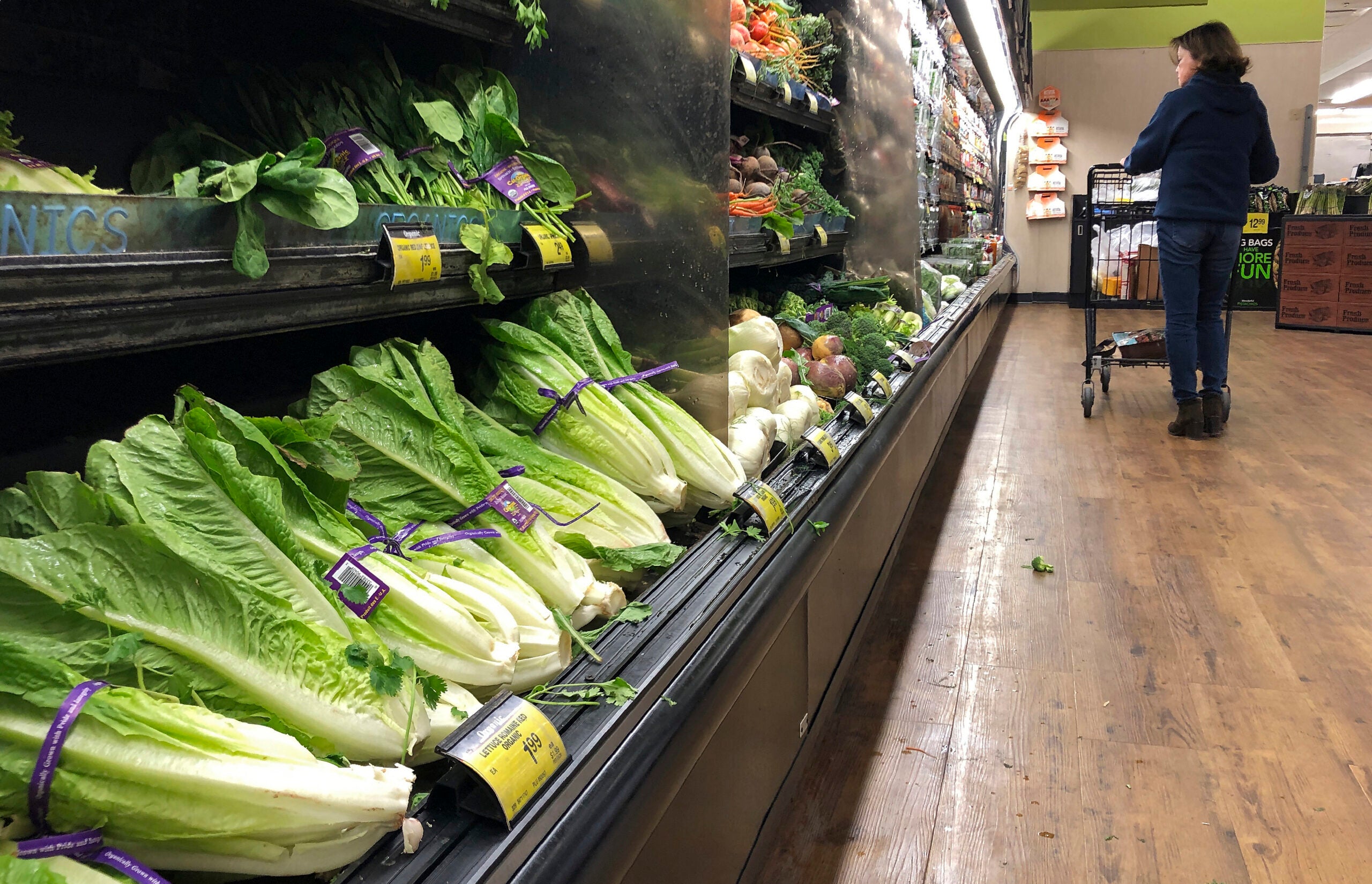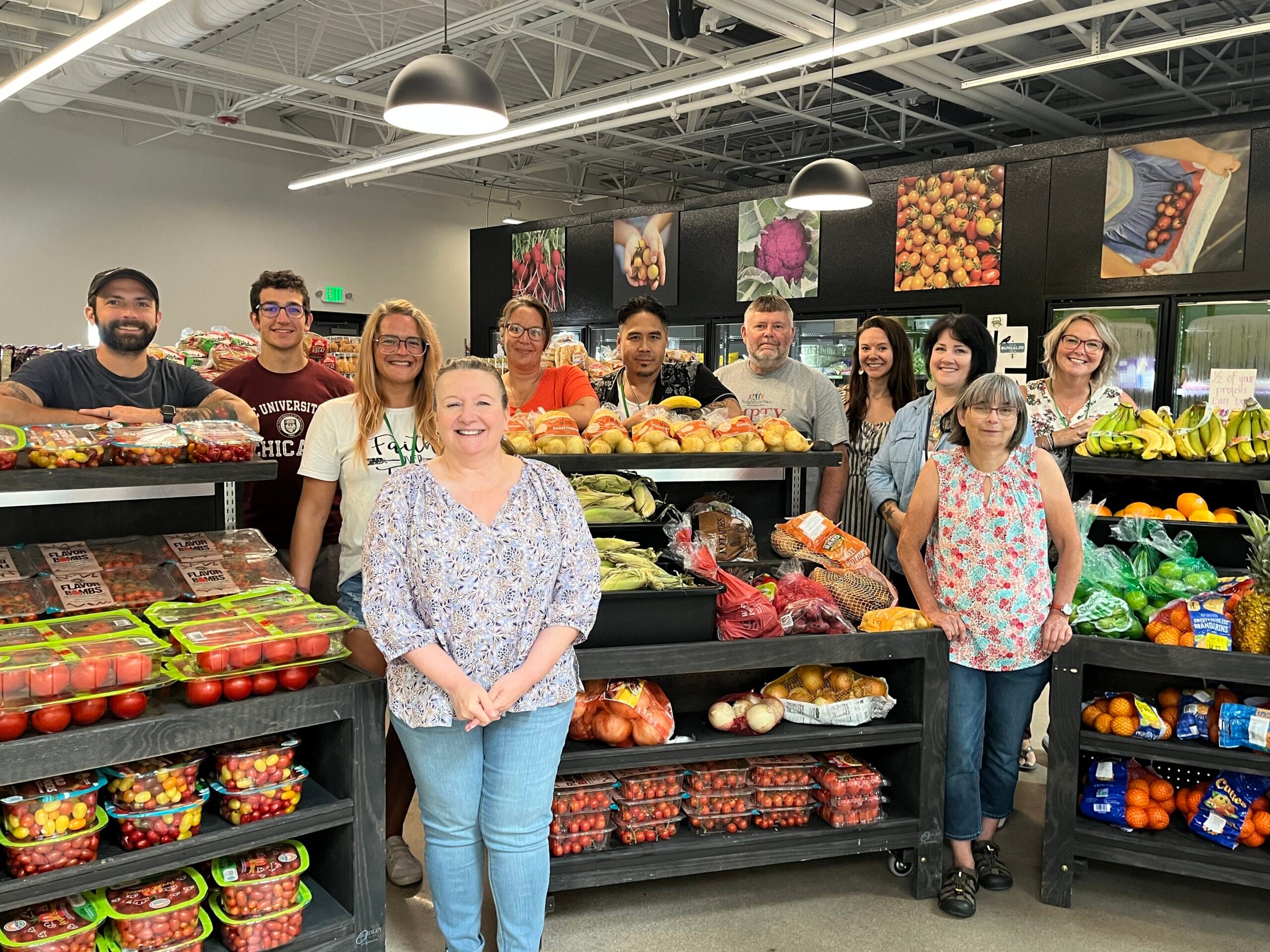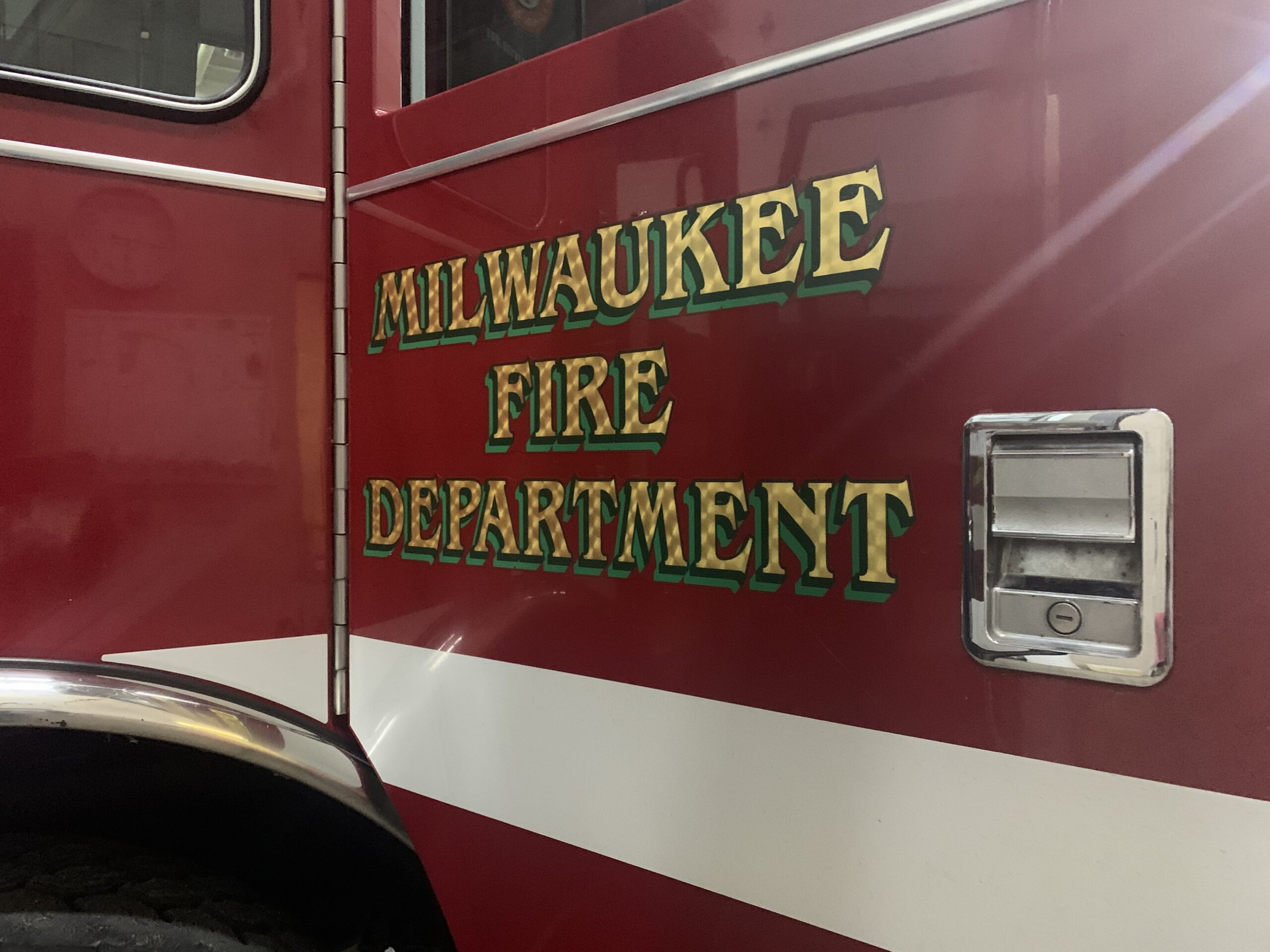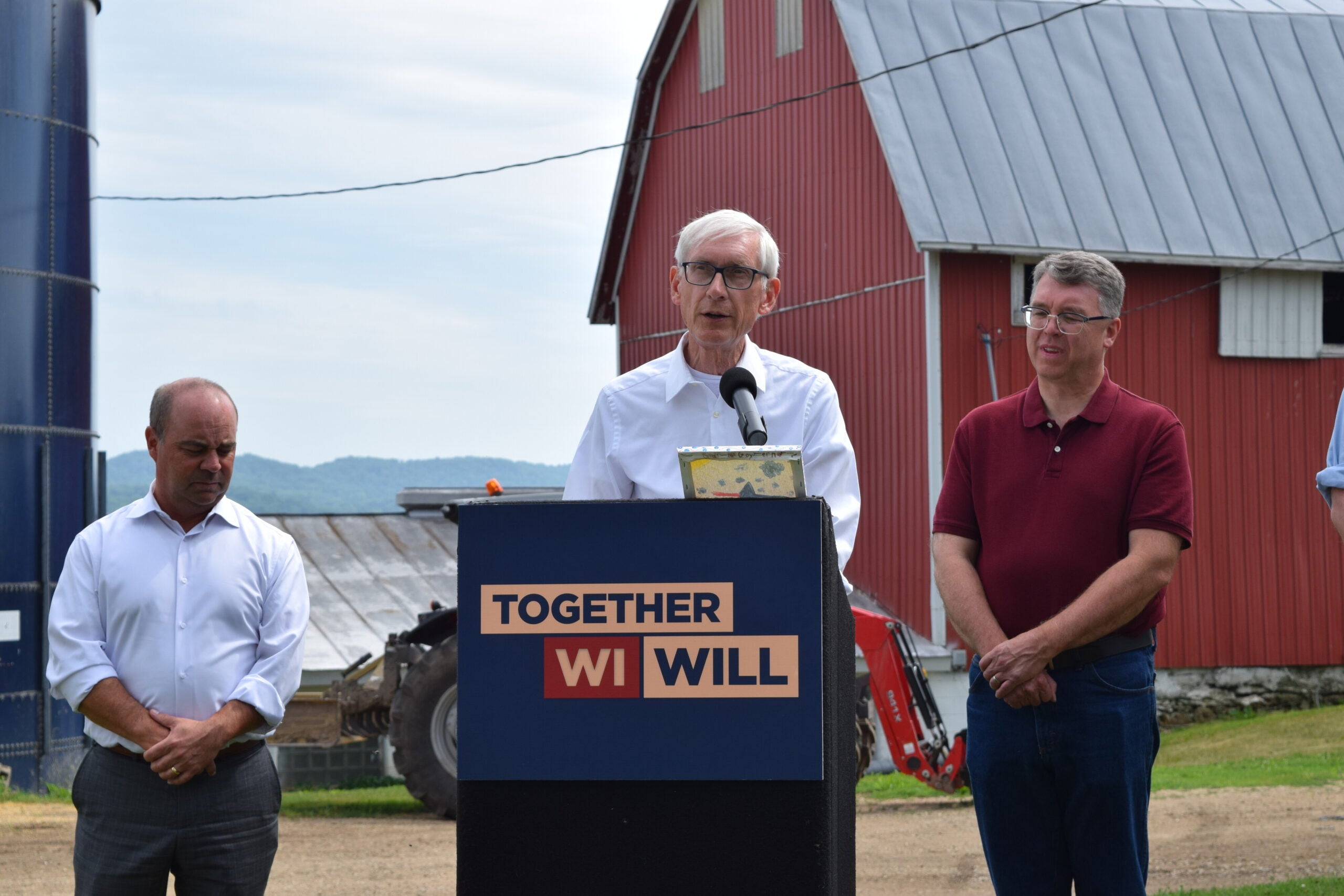As a new state grant program for food banks opens this week, those working to address food insecurity say the need for support will only continue to grow.
The Wisconsin Department of Agriculture, Trade and Consumer Protection is expected to release a request for proposals for the COVID-19 Food Security and Wisconsin Products grants this week.
Funded by money from the federal coronavirus relief bill, the $10 million grant program will help food banks and pantries purchase Wisconsin food products.
Stay informed on the latest news
Sign up for WPR’s email newsletter.
It’s the second half of DATCP’s Food Security Initiative. The agency is currently taking applications for the $5 million Network Support grant program, which is meant to help nonprofit organizations cover added operational costs caused by COVID-19
Details of the application have not been released. But DATCP officials have said that products must have “at least 50 percent of the value of the product or service being attributable to Wisconsin ingredients, production or processing activities” to be eligible for the grants.
Stephanie Jung Dorfman is executive director of Feeding Wisconsin, a network of food banks that sources and provides food to local programs. She said her organization is planning to apply for the money and has already applied for the first round of grants.
“The amount of money that our network is spending on purchasing (food) right now is more than double what was budgeted for. So I’m certain that there will be a great interest in these grants, a great number of folks applying and I’m certain the asks will be larger than the available awards,” Jung Dorfman said.
Jung Dorfman said Feeding Wisconsin already sources many fresh foods locally through partnerships with state agriculture organizations. She said they’ve been able to make large purchases of butter and ground beef since the pandemic started thanks to support from groups like Dairy Farmers of Wisconsin.
“Right now, we’re receiving a good amount of produce, much of it local and some of it through a USDA program. But our network is still in need of protein. Meats are always a product that we need and that folks experiencing hunger would like to put on their tables,” Jung Dorfman said.
Jung Dorfman said finding shelf-stable foods, like rice, peanut butter and dried beans, that are made locally is a lot harder.
She said food banks and pantries will need these kinds of products this fall and winter, when food insecurity is expected to grow as other COVID-19 relief programs end.
“We’re really looking ahead to how do we secure enough shelf stable products? How do we essentially work with canners to take some of that fresh product and turn it into canned fruits and vegetables to make sure that we have those things on our shelves come winter?” Jung Dorfman said.
She said the organization is hoping the new grant program through DATCP can help address some of those gaps.
But not all food programs in the state feel like they’re able to apply for the funding.
Liz Seefeldt is executive director of The BRICK Ministries, which runs four food pantries in Ashland and Bayfield counties.
Seefeldt said her organization already works with local producers to purchase or receive donated food. But she said applying for DATCP’s grant program would be too difficult because of the size of most local farms.
“It’s not like we can just tap into somebody who’s going to be able to provide just huge quantities of product. For us, it means connecting with a bunch of small-scale farmers,” Seefeldt said. “I think it would be great if we could form a collaborative application to make sure that our farmers up here are getting the help that they might need. And yet for an organization like ours and for a region like ours, there are a lot of moving parts, a lot of different partners that would make it one application.”
Even if her organization won’t directly get the new grant funds, Seefeldt said the money will still help address the need for assistance across the state.
“We’re grateful that there’s a wide range of people working on food security because there’s no one program or one agency that has all of the answers,” Seefeldt said. “So whether we’re applying for one of those grants at our level or if it’s a larger player at a regional basis or whomever it might be, the more that’s injected into the food security system, the better.”
In the first round of grant funding, DATCP asked food banks to include local food pantries in their applications instead of having the programs apply on their own.
Jung Dorfman said the consolidation is likely meant to take the burden of applying off of local pantries and help stretch the limited dollars farther.
And like Seefeldt, she said Feeding Wisconsin has also been thinking how their purchases are impacting local farmers.
“We’ve been having some more recent conversations about how we make sure to include our Tribal Nation growers and producers in this next application and our Hmong farmers who are being greatly impacted by changes in local farmers markets,” Jung Dorfman said, “Just trying to find a way to streamline how we will source our product in very local ways but also make sure that our food banks are getting the quantities and scale of product that they’re going to need. For us, it’s very easy to purchase truck loads of food and I know that not all growers have the capability of supplying that much food.”
She said Feeding Wisconsin is hoping to build partnerships with companies who can aggregate local foods to make those larger purchases possible for food banks in the state.
Wisconsin Public Radio, © Copyright 2024, Board of Regents of the University of Wisconsin System and Wisconsin Educational Communications Board.

